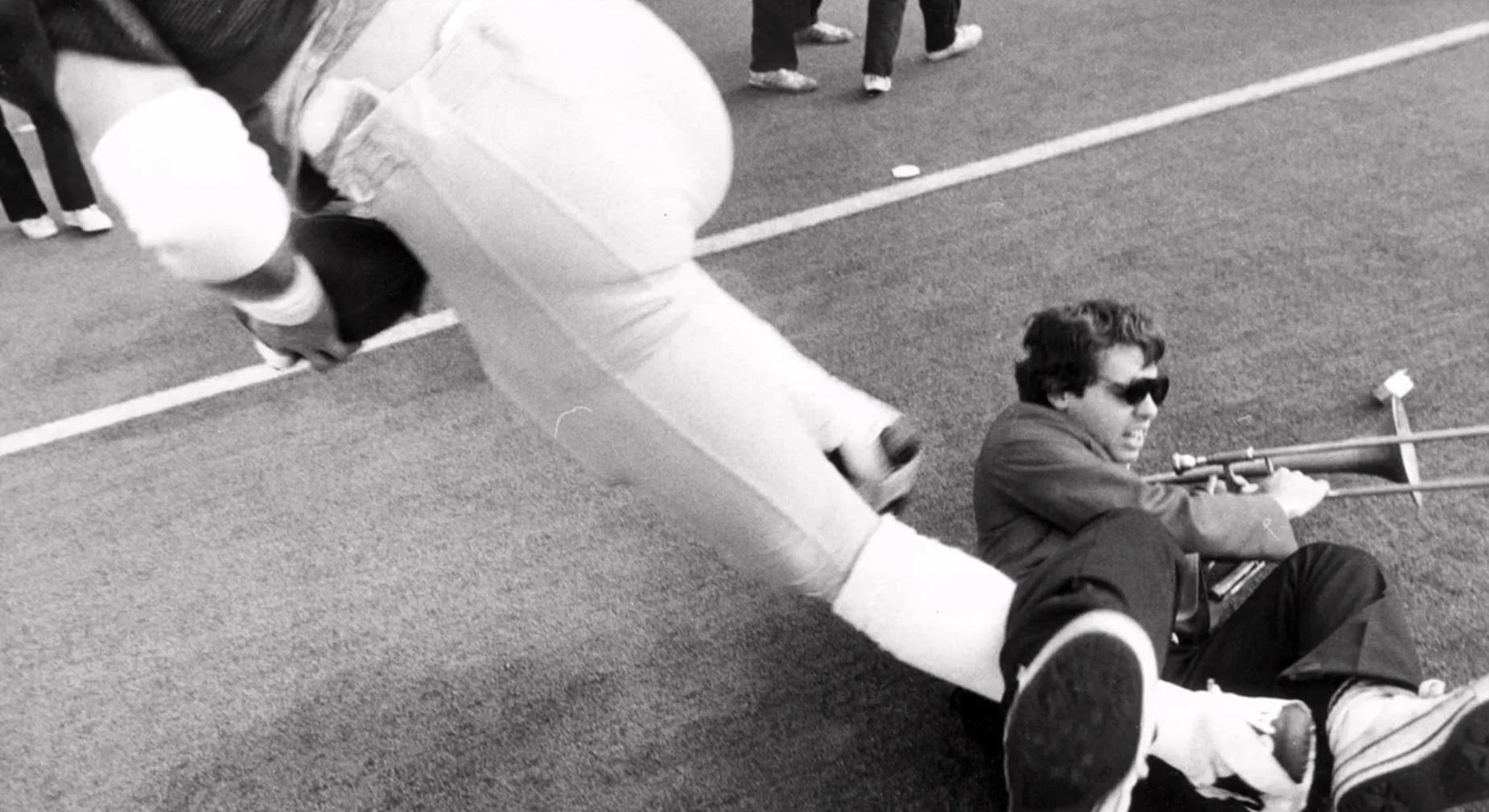About The Play
For the liveliest and best written account of The Play read this article by Ron Fimrite: http://www.cs.berkeley.edu/~pattrsn/anatomyofmiracle.htm
To that great article I have a few things to add...
If you took away the names of the players, the backstory of the importance of the ’82 Big Game, the heroics of John Elway and others (notably Gale Gilbert, Mariet Ford, Wesley Howell, and Mark Harmon) you are left with a tragicomedy of epic proportions. Funny, but not entirely random. And, as David Maraniss, and Steve Kroner mention in the film it’s a one off. In the aftermath, the NCAA ruled that marching bands could not enter the playing field while a game is in progress.
Let me tackle the NCAA’s ruling first. What initially interested me about The Play was how it revealed something about “the nature of games”. The really, really interesting thing about The Play is that it represents the spectacle of “the real world” - the band- living and acting in “real time” intruding upon a “playing field” that was operating under a construct of rules that provide order outside the bounds of “real life”. Somehow, as maybe only the LSJUMB could do, the band pierced this protected playground with an anarchic vitality that turned an incredible football play into a Keystone Cops comedy. No one I interviewed bit at the question I asked about who represented the "real world" during the play. Still, it smoldered under the surface and informed the shape of the film.
Despite the piling of a marching band on top of a ridiculously odd football play, very little of The Play could be considered "random". In fact, the film is really an interrogation into the events of November 20, 1982 in order reveal the historical elements that led to the famous four seconds. Clearly, Joe Kapp, the Cal coach had prepared his players for The Play through their Sunday afternoon “grabass” practices. That doesn’t make The Play an actual play. But it does knock it down a notch from the realm of divine intervention.
A bit more startling is the fact that the band’s reputation for anarchy- which certifiably peaked with The Play - dates back to the Kennedy assassination. It’s a long story but the upshot is that the band had gone on strike in 1963 because the school had fired their longtime leader. When JFK was assassinated the band made a deal with the newly appointed band director, Art Barnes (who would remain their leader for nearly 35 years), so that they could perform a show the Saturday after JFK’s death. The deal narrowed Barnes' director role to writing and teaching musical charts while empowering band members to orchestrate all on field activities- thus dividing the work of the former band director. Shortly thereafter they gave up the charade of being a military style band and became a freewheeling “scatter” band. Without stretching facts to a breaking point, one could argue that The Play represents the fruit of a bargain ripened in the dark shadow of JFK's death.
Finally, The Play was a complete original. For the Cal side you could say that no one had ever seen a series of laterals like this in a game played at this level of American football. It’s been copied since but never with the same swagger and rarely with the same results- or controversy. As for the Band’s role - lightning will never strike in this spot again. Could not. And in its uniqueness The Play stands as a monument to the possible. This is a great gift - even though generations of Stanford fans will continue to quibble with the results.
--Pete Vogt

